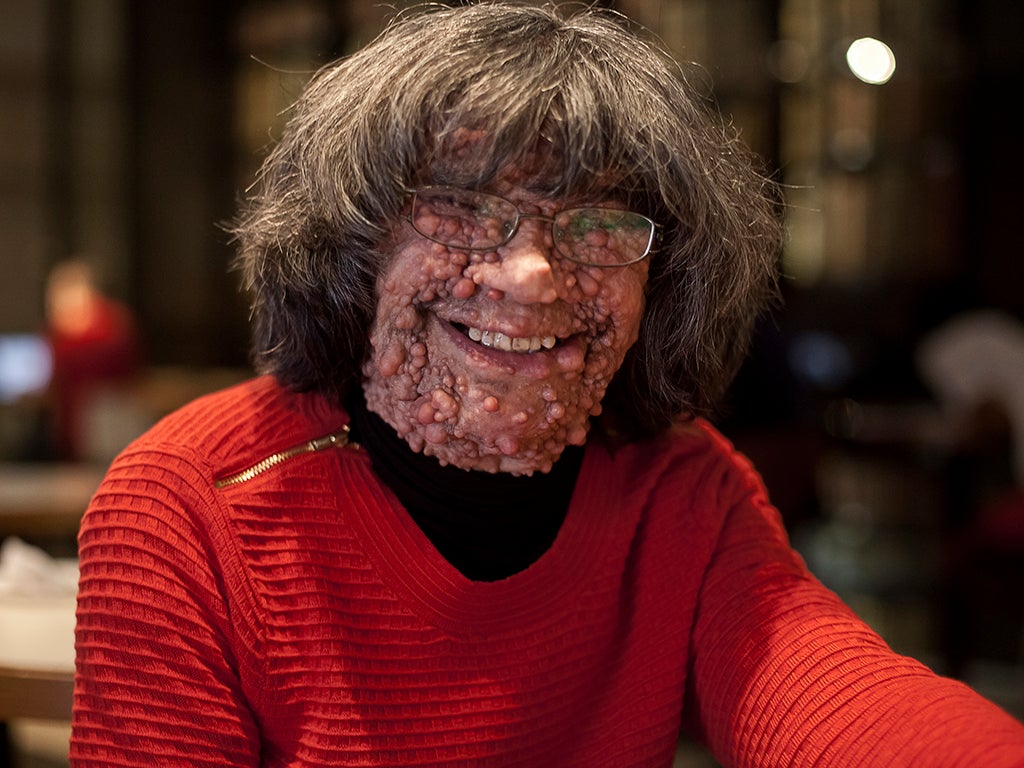Neurofibromatosis Awareness Day: Look beyond the 'Elephant Man' stigma
For years, neurofibromatosis was wrongly associated with the condition of the ‘Elephant Man’, as it is frequently stereotyped, misunderstood and often unheard of. For the mothers of children facing a future with NF, it’s time to spread awareness of the condition

When ten-year-old Katie* wakes up each morning, she makes the painful journey to her bedroom mirror. Peering into the glass, she anxiously checks her body from head to toe. Born with neurofibromatosis type one, lumps have grown aggressively over Katie’s spine, neck, stomach, and ribs. She lives in constant fear that more have appeared overnight.
Her mother, Jane*, looks on. “It’s very sad to see – she hates it,” Jane says. “For a ten-year-old, it’s a lot to cope with. She can’t walk very well at the moment either, and gets the mickey taken out of her at school.” The biggest lump is on Katie’s spine – which combined with scoliosis and problems with her feet, makes walking painful, and compresses her bowels.
Neurofibromatosis is one of the world's most common genetic conditions, but few people really understand what it is. NF1 is the most prevalent type, affecting 25,000 people in the UK. Complications include tumours, skin lumps, curvature of the spine, bone deformities, and learning disabilities. Café au lait spots on the skin (often mistaken for birthmarks) are an early sign. NF2 is more rare, affecting just over 1,000 people in the UK and Schwannomatosis, a third type, is even rarer.
A year ago, Katie began to retreat from the rest of the world. She spends hours painting and writing stories, usually about a pig named Henry. In her literary creations, Henry has fun at school and goes to the funfair: everything that Katie – who dreams of being a doctor or a vet – feels excluded from. Despite the physical manifestations of NF1, Katie is a normal ten-year-old who just wants to be accepted by her peers.
But no case of NF1 is the same, which is why the condition is so difficult to understand. Around two thirds of people with NF1 are mildly affected and live a normal life. Some people will have a learning disability, whilst others, including Katie, do not. Complications, such as tumours and lumps, can develop at any time, with doctors even diagnosing NF in 80-year-olds. A recent survey found 44 per cent of young people with NF1 said uncertainty was their main concern.
Professor Jaishri Blakeley, director of the US-based Johns Hopkins Neurofibromatosis Centre, says this is an area they are researching.
“If we had a bio-marker that would tell us who is going to have no problems and who is going to have a difficult time – we may be able to develop drugs to give them for short windows of time. That part is science fiction, but I hope I see that in my career. That is what we’re working towards.”
Diane Sunderland, whose 11-year-old daughter, Ella, was diagnosed aged eight, describes the future as, “a ticking time bomb.” Every six months Ella has an MRI to monitor tumours on her brain and optic nerves, to check if her sight has been affected.
“It’s hard. I want to say it will be OK – but I don’t want to make promises I can’t keep,” Diane says.
Early awareness of NF1 is another concern. Diane actively campaigns to get the warning signs, café au lait marks, included in the personal child health record (‘the red book’), with Ella’s diagnosis five years after they first sought help. And Diane adds: “When Ella was finally diagnosed – I went to the GP to get advice. The GP replied: ‘What’s that?’ She had to look it up on Google whilst I cried my eyes out.”
The first parliamentary debate on NF1 took place in January. Led by Labour Lords, it called for better monitoring of NF1, and early detection.
Marc Crank, chief executive of the Neuro Foundation, who also has NF1, agrees. “If it’s not picked up until you’re in the teens, you may have missed out on all the additional support you should have had.”
He himself has had various tumours, requiring many operations over the years. Yet Marc, a married man, teaches karate, cycles on a regular basis, and works full-time running the Neuro Foundation. “Wherever there is ignorance, there will be stigma,” he adds.
Although the condition has no cure, Professor Rosalie Ferner, the national lead for NF1 services, says research is improving. Neuroimaging, for example, means tumours and effects of therapy can be measured, and the Neuro Foundation employs special advisors who work with families, health professionals and schools.
“Awareness is being raised and it’s hugely different from how it was. Could it be better? Of course it could,” she says.
“But in a cash-strapped health service, it’s one of many competing things. There are certain regions where they have very little input and those regions need a lot more help.
“If I had a wish list, it’s about allowing people to monitor their own health and getting the best possible help when they need it.”
*The names of Jane and Katie have been changed for this article
Sunday 17 May is the Neurofibromatosis Awareness Day. For more information visit:
Changing Faces is a charity for people and families who are living with conditions, marks or scars that affect their appearance. For more information visit:
Subscribe to Independent Premium to bookmark this article
Want to bookmark your favourite articles and stories to read or reference later? Start your Independent Premium subscription today.

Join our commenting forum
Join thought-provoking conversations, follow other Independent readers and see their replies